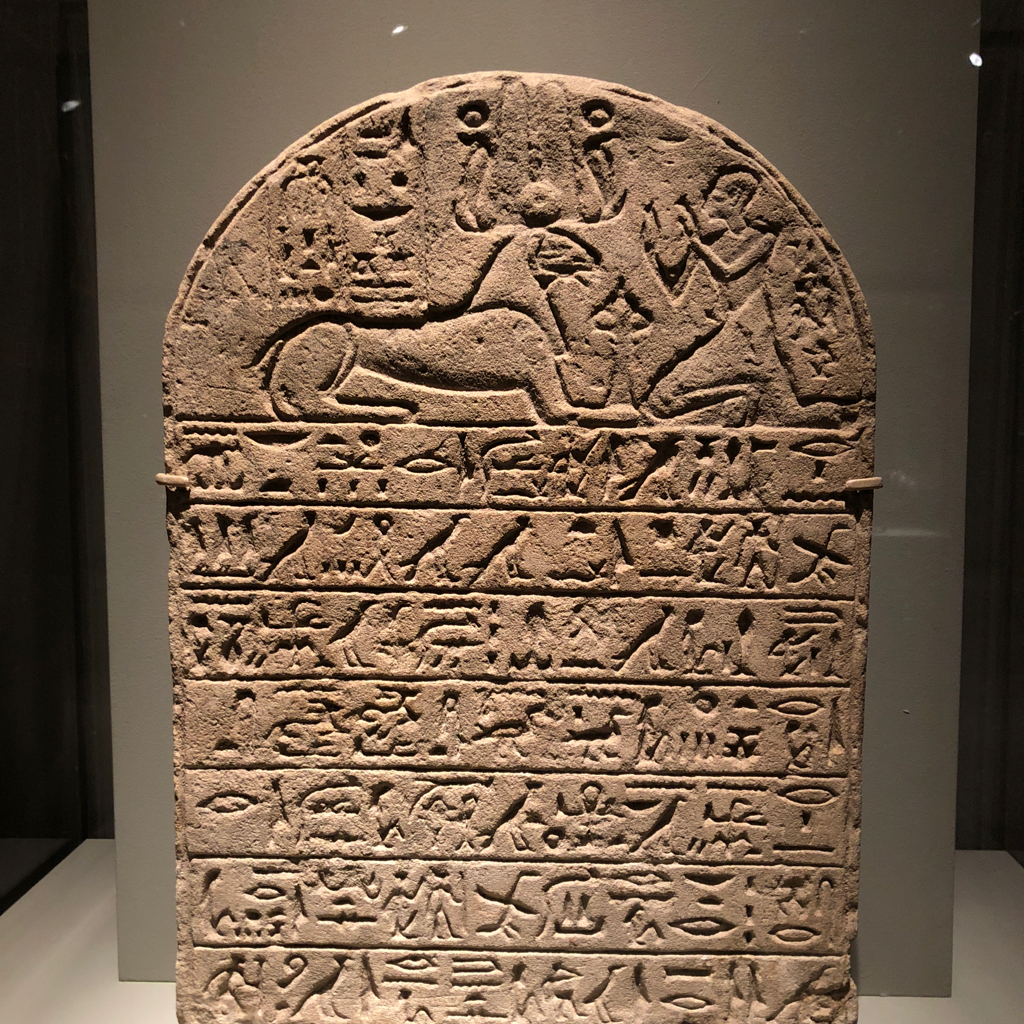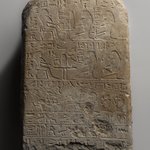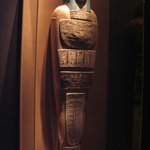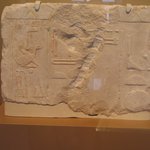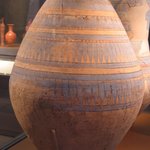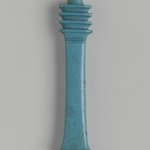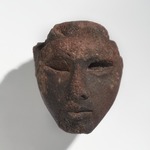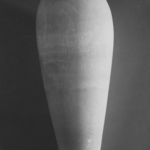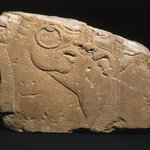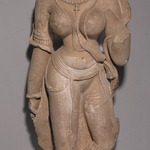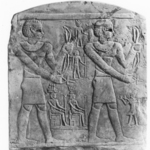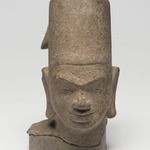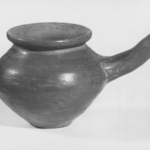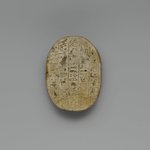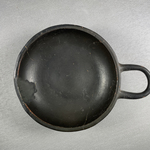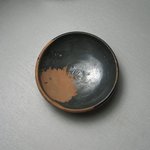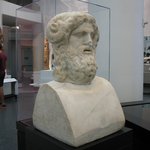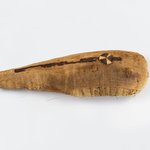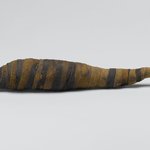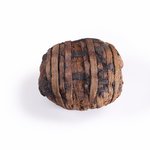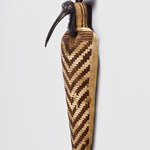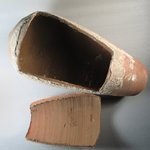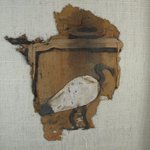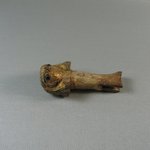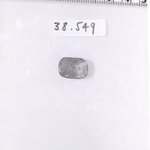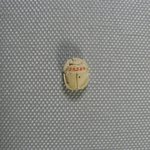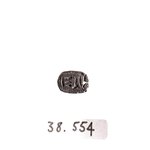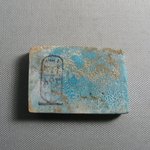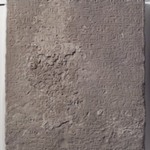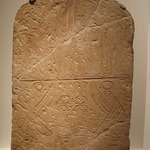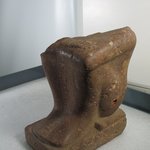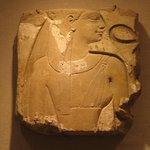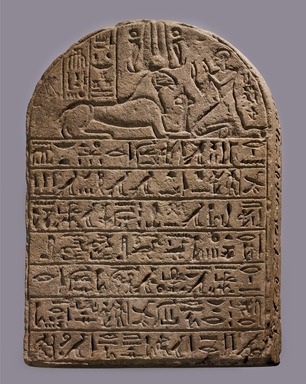

Nubian. Stela of Hori, ca. 1292–1190 B.C.E. Sandstone, 19 3/16 x 14 x 3 in., 47.5 lb. (48.8 x 35.6 x 7.6 cm, 21.55kg). Brooklyn Museum, Gift of the Egypt Exploration Society, 38.544. Creative Commons-BY (Photo: Brooklyn Museum (Gavin Ashworth,er), 38.544_Gavin_Ashworth_photograph.jpg)
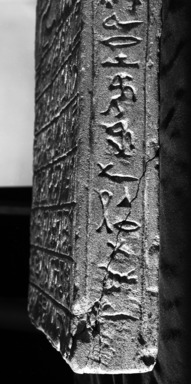
Nubian. Stela of Hori, ca. 1292–1190 B.C.E. Sandstone, 19 3/16 x 14 x 3 in., 47.5 lb. (48.8 x 35.6 x 7.6 cm, 21.55kg). Brooklyn Museum, Gift of the Egypt Exploration Society, 38.544. Creative Commons-BY (Photo: Brooklyn Museum, 38.544_negM_bw_IMLS.jpg)
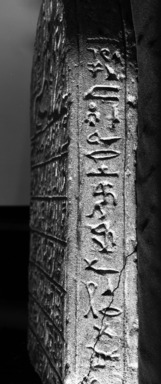
Nubian. Stela of Hori, ca. 1292–1190 B.C.E. Sandstone, 19 3/16 x 14 x 3 in., 47.5 lb. (48.8 x 35.6 x 7.6 cm, 21.55kg). Brooklyn Museum, Gift of the Egypt Exploration Society, 38.544. Creative Commons-BY (Photo: Brooklyn Museum, 38.544_negK_bw_IMLS.jpg)

Nubian. Stela of Hori, ca. 1292–1190 B.C.E. Sandstone, 19 3/16 x 14 x 3 in., 47.5 lb. (48.8 x 35.6 x 7.6 cm, 21.55kg). Brooklyn Museum, Gift of the Egypt Exploration Society, 38.544. Creative Commons-BY (Photo: Brooklyn Museum, 38.544_negL_bw_IMLS.jpg)
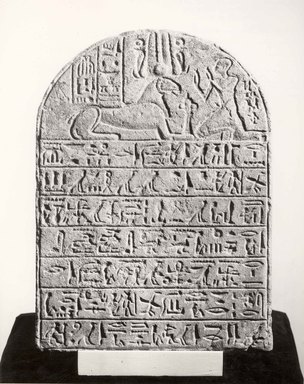
Nubian. Stela of Hori, ca. 1292–1190 B.C.E. Sandstone, 19 3/16 x 14 x 3 in., 47.5 lb. (48.8 x 35.6 x 7.6 cm, 21.55kg). Brooklyn Museum, Gift of the Egypt Exploration Society, 38.544. Creative Commons-BY (Photo: Brooklyn Museum, CUR.38.544_negA_bw.jpg)

Nubian. Stela of Hori, ca. 1292–1190 B.C.E. Sandstone, 19 3/16 x 14 x 3 in., 47.5 lb. (48.8 x 35.6 x 7.6 cm, 21.55kg). Brooklyn Museum, Gift of the Egypt Exploration Society, 38.544. Creative Commons-BY (Photo: Brooklyn Museum, CUR.38.544_negB_bw.jpg)

Nubian. Stela of Hori, ca. 1292–1190 B.C.E. Sandstone, 19 3/16 x 14 x 3 in., 47.5 lb. (48.8 x 35.6 x 7.6 cm, 21.55kg). Brooklyn Museum, Gift of the Egypt Exploration Society, 38.544. Creative Commons-BY (Photo: Brooklyn Museum, CUR.38.544_negC_bw.jpg)
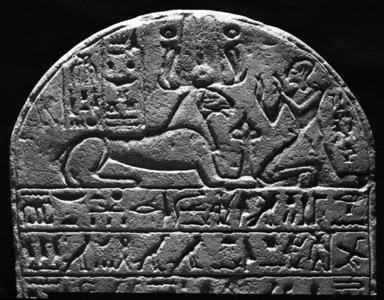
Nubian. Stela of Hori, ca. 1292–1190 B.C.E. Sandstone, 19 3/16 x 14 x 3 in., 47.5 lb. (48.8 x 35.6 x 7.6 cm, 21.55kg). Brooklyn Museum, Gift of the Egypt Exploration Society, 38.544. Creative Commons-BY (Photo: Brooklyn Museum, 38.544_negE_bw_IMLS.jpg)
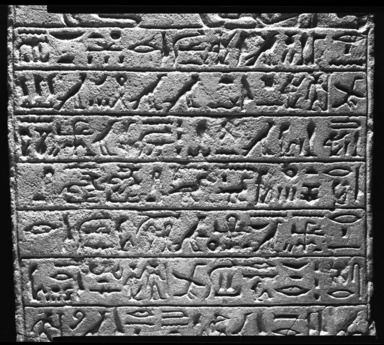
Nubian. Stela of Hori, ca. 1292–1190 B.C.E. Sandstone, 19 3/16 x 14 x 3 in., 47.5 lb. (48.8 x 35.6 x 7.6 cm, 21.55kg). Brooklyn Museum, Gift of the Egypt Exploration Society, 38.544. Creative Commons-BY (Photo: Brooklyn Museum, 38.544_negG_bw_IMLS.jpg)
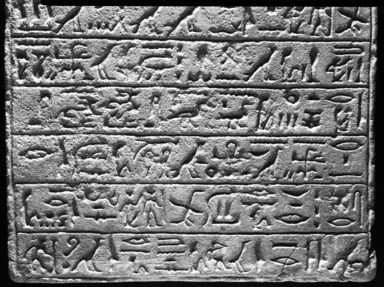
Nubian. Stela of Hori, ca. 1292–1190 B.C.E. Sandstone, 19 3/16 x 14 x 3 in., 47.5 lb. (48.8 x 35.6 x 7.6 cm, 21.55kg). Brooklyn Museum, Gift of the Egypt Exploration Society, 38.544. Creative Commons-BY (Photo: Brooklyn Museum, 38.544_negF_bw_IMLS.jpg)

Nubian. Stela of Hori, ca. 1292–1190 B.C.E. Sandstone, 19 3/16 x 14 x 3 in., 47.5 lb. (48.8 x 35.6 x 7.6 cm, 21.55kg). Brooklyn Museum, Gift of the Egypt Exploration Society, 38.544. Creative Commons-BY (Photo: Brooklyn Museum, 38.544_negD_bw_IMLS.jpg)

Nubian. Stela of Hori, ca. 1292–1190 B.C.E. Sandstone, 19 3/16 x 14 x 3 in., 47.5 lb. (48.8 x 35.6 x 7.6 cm, 21.55kg). Brooklyn Museum, Gift of the Egypt Exploration Society, 38.544. Creative Commons-BY (Photo: Brooklyn Museum, 38.544_negI_bw_IMLS.jpg)
Stela of Hori
Egyptian, Classical, Ancient Near Eastern Art
Composite animals were among the first of Egyptian artists’ creations and continued for four thousand years as integral to art and religion. By combining the ram and lion, the fertility of the one and the strength of the other were emphasized in the god Amun.





